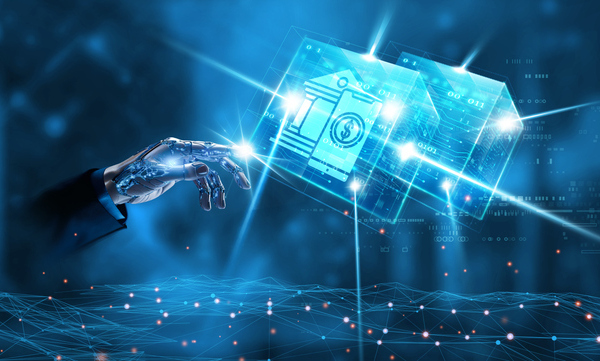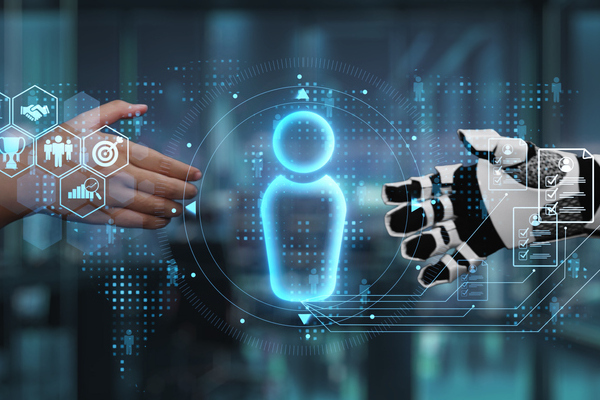The future of platform engineering and AI

Derek Ashmore at Asperitas outlines six ways that the intersection between platform engineering and AI fuels performance and growth
Artificial intelligence and platform engineering are rapidly converging into one of the most transformative pairings in enterprise technology. Each discipline amplifies the other: platform engineering gives AI the stability and scalability it needs to thrive, while AI injects intelligence, automation, and predictive capabilities into platforms themselves. Together, they are reshaping how organisations build, deploy, and manage digital systems, accelerating innovation while maintaining control.
This evolving partnership is not just about faster pipelines or smarter code. It represents a structural shift in how enterprises align technology and business outcomes. Here are six powerful ways their intersection enhances performance and drives company growth.
1. Scalable foundations for enterprise AI
AI workloads are notoriously demanding. They require immense compute power, reliable data access, and secure, compliant environments. Platform engineering provides the foundation that allows these AI initiatives to scale from isolated proofs of concept into enterprise-wide capabilities.
Through standardised, self-service platforms, platform engineering abstracts away complexity. Automated provisioning, Infrastructure as Code, and built-in observability give AI teams instant access to compliant environments. Instead of waiting weeks for infrastructure approval, a data scientist can now launch a GPU cluster or pull governed datasets in minutes.
This foundation not only speeds development but also enforces consistency across teams. Cost tracking, tagging, and identity-based access ensure AI adoption aligns with the same governance and reliability standards as any other enterprise system. The result is AI that scales securely, a necessity for organisations operating in regulated sectors like finance, healthcare, or manufacturing.
2. Intelligent infrastructure that thinks ahead
AI is redefining automation itself by infusing intelligence into the underlying platform. Traditional automation reacts to demand; AI-driven automation anticipates it.
Machine learning models can analyse usage patterns, performance data, and even external signals such as business seasonality to predict future workloads. Instead of scaling infrastructure only when thresholds are exceeded, the system pre-emptively allocates or releases resources, optimising both cost and performance.
This predictive automation extends beyond compute scaling. AI can determine the most efficient placement of workloads across zones, clusters, or even cloud providers. The platform effectively becomes self-optimising: learning, adapting, and improving resource utilisation over time.
3. Predictive observability and self-healing systems
One of the most transformative synergies between AI and platform engineering lies in observability. AI systems can process enormous volumes of metrics, logs, and traces to detect anomalies long before they cause outages.
Rather than waiting for alerts, predictive observability identifies subtle correlations, such as how a small latency spike in one service often precedes a database bottleneck elsewhere. By surfacing these hidden patterns, AI gives operations teams the ability to act before customers are affected.
When incidents do occur, AI accelerates recovery through automated root cause analysis. It can sift through deployment histories, dependency maps, and error logs to pinpoint likely causes and even suggest or execute remediation steps. In more advanced implementations, the infrastructure itself can heal: restarting failed containers, routing around unhealthy nodes, or rolling back problematic releases automatically.
This convergence reduces downtime, cuts operational costs, and strengthens user trust. Critical metrics for business growth in a digital-first economy.
4. Smarter configuration and developer empowerment
Modern platforms contain thousands of configuration variables, from database tuning to network thresholds. Optimising these manually is nearly impossible. AI can learn from performance data to recommend ideal configurations, improving efficiency and reliability.
Equally transformative is the use of AI assistants within developer tools. These systems can guide engineers through deployment strategies, flag security or compliance issues, and even generate Infrastructure as Code templates from high-level intent. The result is a democratisation of platform expertise, empowering developers to build and deploy more effectively without requiring deep infrastructure knowledge.
This intelligent developer experience reduces friction, shortens delivery cycles, and allows teams to focus on innovation rather than maintenance.
5. Governance and agility in harmony
As AI accelerates innovation, it also introduces new risks from data privacy to cost overruns. Platform engineering provides the governance framework that allows organisations to innovate confidently.
The key is embedding guardrails directly into the platform. Policy as Code ensures every workload, including those powered by AI, complies automatically with enterprise standards for security, tagging, and cost control. Internal developer platforms can offer pre-approved “golden paths,” giving teams self-service speed within trusted boundaries.
AI also strengthens governance through continuous monitoring and drift detection. If an environment deviates from policy, the system can flag or even correct it in real time. For sensitive scenarios such as data use across regions, human oversight can remain part of the loop while automation handles routine enforcement.
This balance allows companies to move quickly without losing the trust of regulators, executives, or customers, a key differentiator for sustainable growth.
6. Building the future: Autonomous, adaptive platforms
The long-term trajectory of platform engineering and AI points toward autonomous systems that continuously learn and adapt. These “self-optimising platforms” will manage resources dynamically, predict incidents, and ensure compliance without constant human input.
Future internal developer platforms will be AI-native, offering conversational interfaces and proactive guidance that make deploying enterprise-grade systems as intuitive as consumer applications. Observability data will no longer live in separate dashboards but be woven into unified narratives that explain not just what happened, but why and what to do next.
Even complex multi-cloud environments will benefit. AI models will decide where workloads should run based on cost, performance, and compliance, ensuring every application operates in its “right place” automatically.
These advancements redefine the role of the platform from a delivery mechanism to an intelligent ecosystem that evolves with the business itself.
A partnership that accelerates the enterprise
Companies that embrace the AI / platform engineering partnership are building more than infrastructure. They are cultivating adaptive systems that learn, optimise, and grow alongside the enterprise. In an economy defined by velocity and complexity, that combination may prove to be the ultimate competitive advantage.
Derek Ashmore is AI Enablement Principal at Asperitas
Main image courtesy of iStockPhoto.com and quantic69

Business Reporter Team
Most Viewed
Winston House, 3rd Floor, Units 306-309, 2-4 Dollis Park, London, N3 1HF
23-29 Hendon Lane, London, N3 1RT
020 8349 4363
© 2025, Lyonsdown Limited. Business Reporter® is a registered trademark of Lyonsdown Ltd. VAT registration number: 830519543





